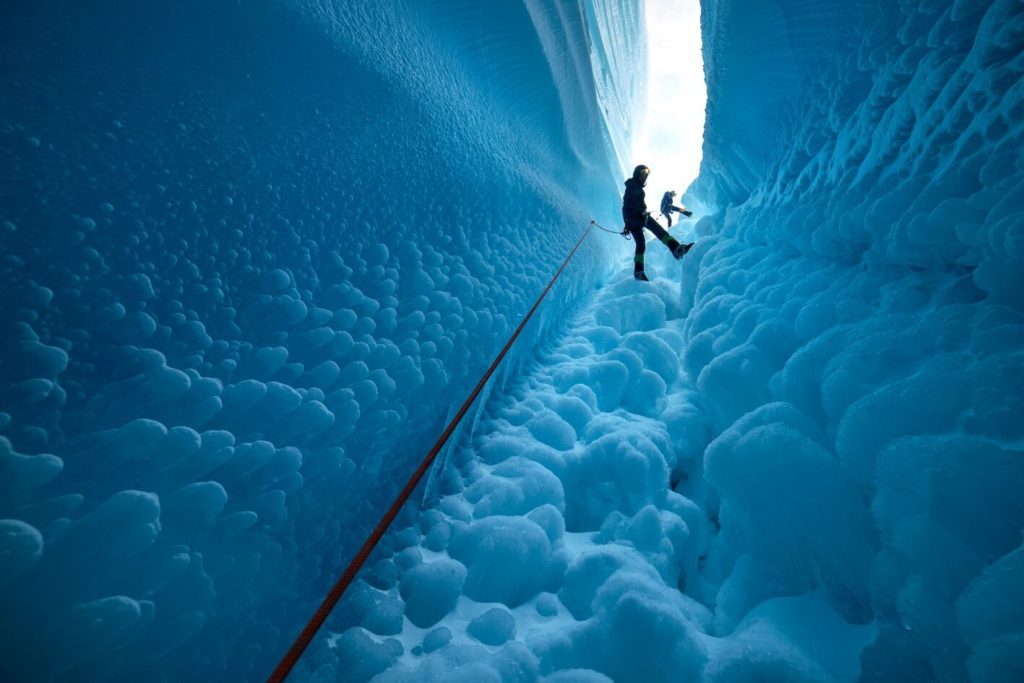
by Ray Rogers
What lies beneath? This is the question that spurs the work of Italian geologist Francesco Sauro, who has been exploring the terrain of caves for years. In his Moncler-sponsored expedition to Greenland, Inside the Glaciers, he went deep into a glacial ice cave to document the majesty of the pristine environment to understand how the planet is evolving, so we can better protect it. Here, Sauro tells Purist about the experience.
The Greenland icecap is an incredible place in and of itself, because it’s so huge and everything around you is ice. And because there are no mountains in this area we explored—the west of Greenland—even the ice is very clear and very clean; there are no rocks in it. When you arrive in the helicopter, it’s like landing on another planet.
And then to get to go down inside this glacier, which can be thicker than 1,000 meters—in some places it’s even more than 2,000 meters—it’s really impressive because you are in something that is alive. The entire icecap is continuously moving and you hear a lot of noises from the ice; cracks are forming and the same caves you are exploring are changing day by day. With ice cave exploration, it’s not about conquering, because what you are exploring will change and disappear.
We need to look at the planet as something special. Expeditions like this one in Greenland and others that I’m organizing around the world in other cave systems have the objective to really look to this part of the Earth, the underground environment, and to learn something about it that is connected to our water and our lives in general. These kinds of studies are really important to link exactly what we are looking at in terms of climate change, evolution of the past and then to the future, of course.
In my mind, exploration also always means protection. If you have the very rare privilege to enter into these spaces, and see how beautiful and how important these environments are, you also feel responsiblefor what could happen to them. So we feel the need to protect them from destruction, contamination and any kind of human activity that could damage them.







